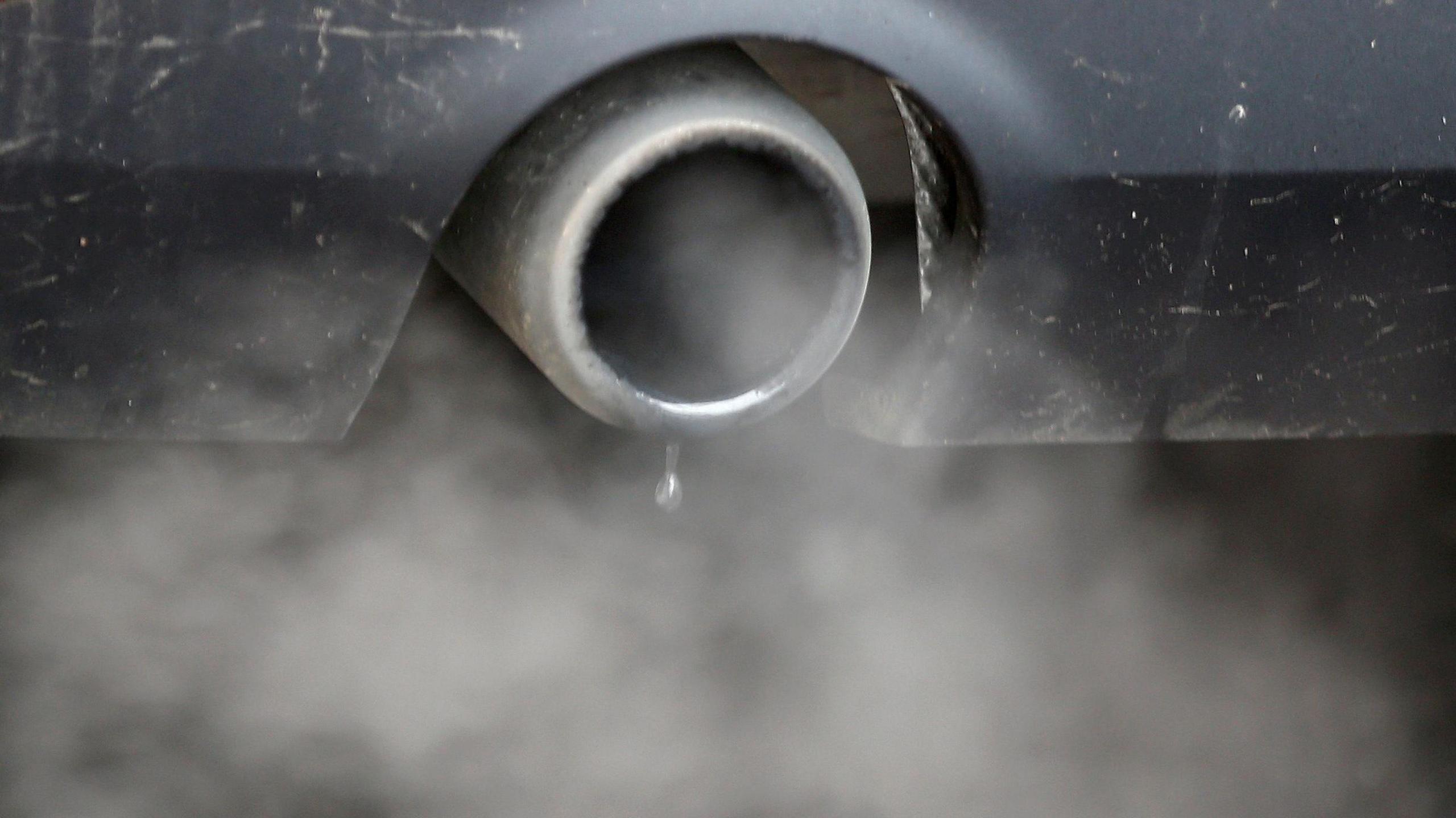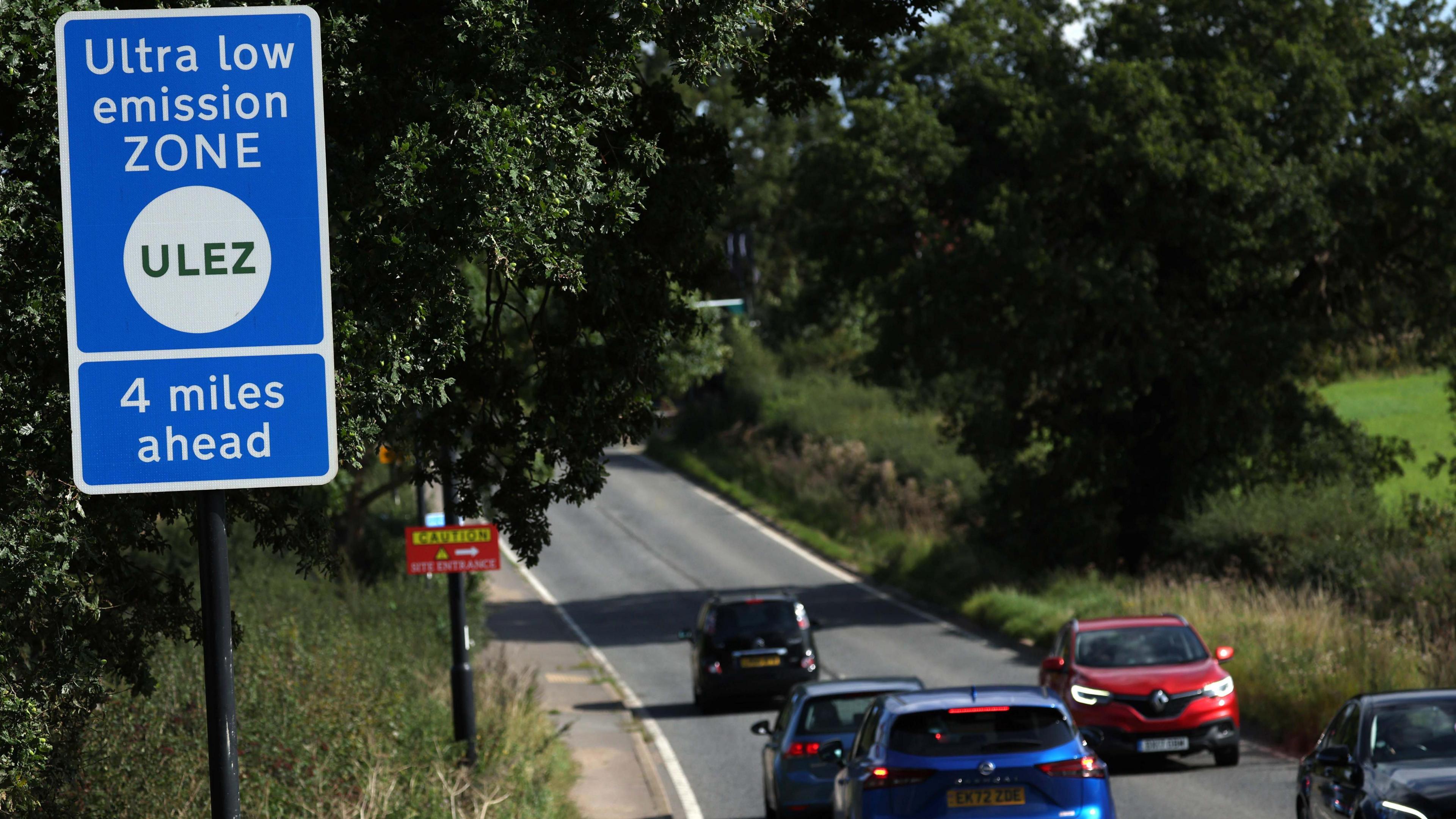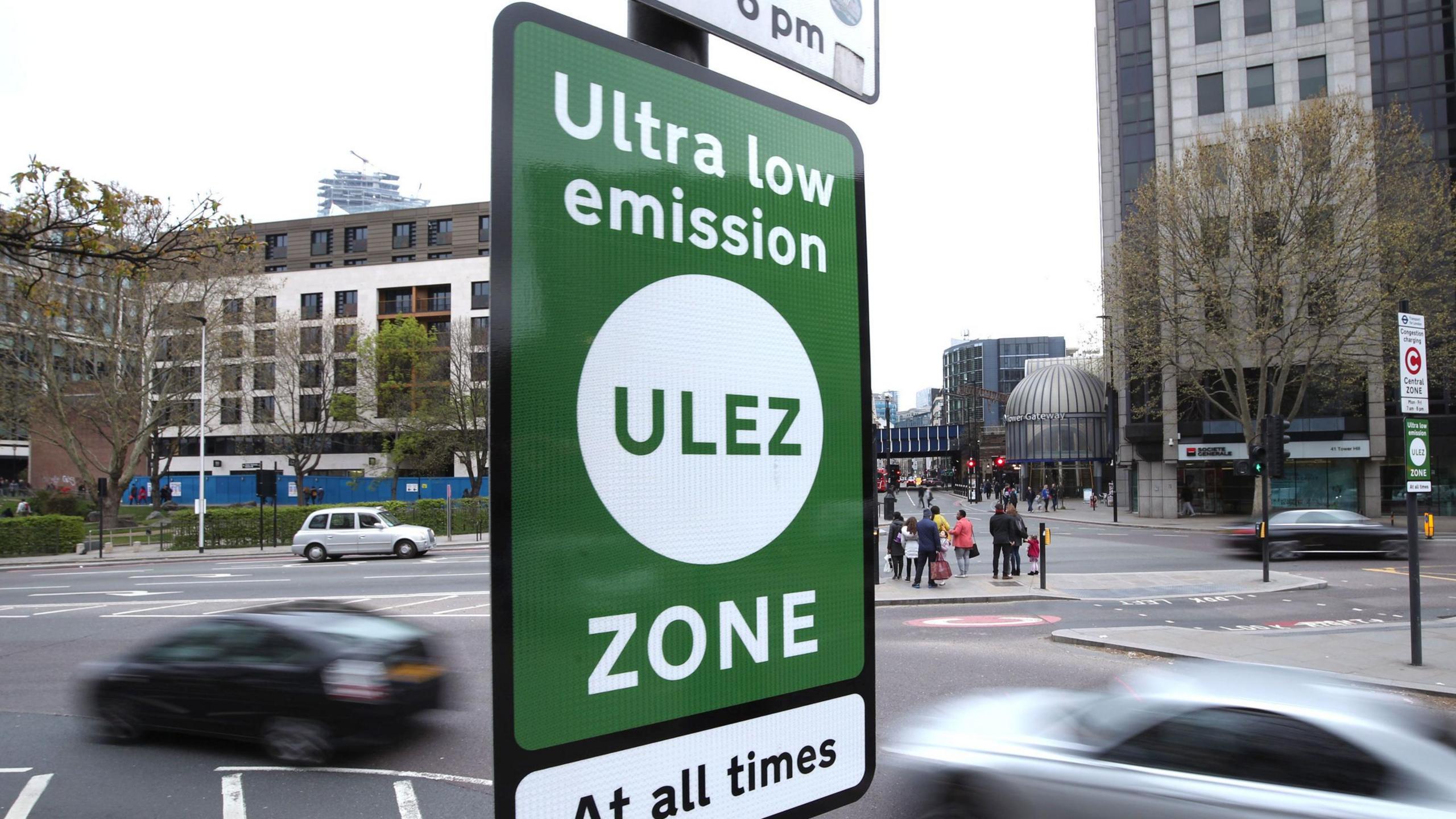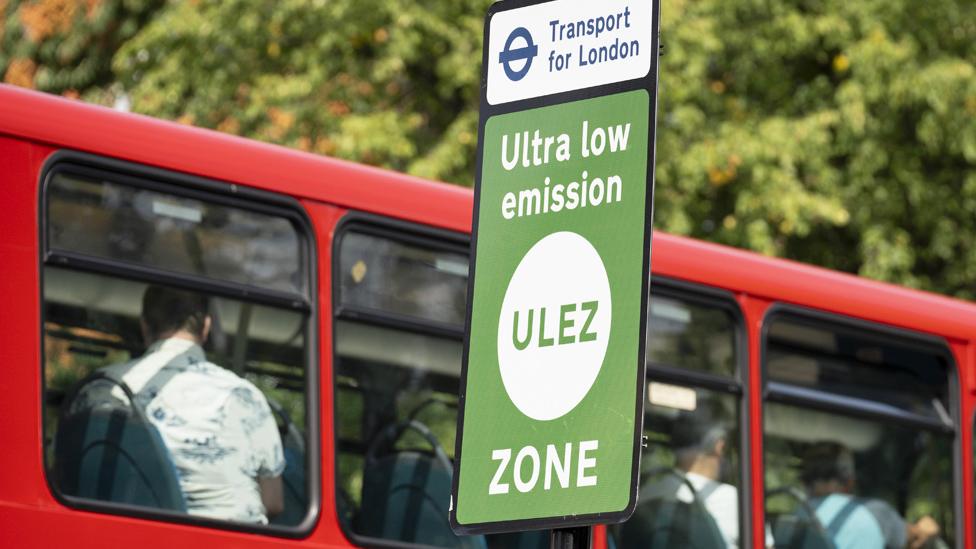London nitrogen dioxide levels fall to legal limit

Sir Sadiq Khan put the fall in NO2 in London down to the Ultra low emission zone
- Published
The level of toxic nitrogen dioxide pollution (NO2) in the air in London has fallen to within the legal limit for the first time since UK regulations were introduced in 2010, government data reveals.
The figures, external, published by the Department for Environment, Food and Rural Affairs (Defra), revealed that London met the air quality standards rules in 2024, while Manchester, Birmingham and Liverpool exceeded those limits.
The mayor of London Sir Sadiq Khan said he was "thrilled" and said it was due to the effect of ultra-low emission zone (Ulez).
City Hall's Conservatives have been approached for comment.
NO2 is a toxic gas that is known to exacerbate asthma and impede lung development and it is among a range of air pollutants measured and regulated under UK law., external
In 2019, experts at Kings College London estimated that without further action, it would take 193 years for London to meet government-set limits.
But the Labour mayor said the aim had been met in nine years by introducing Ulez.
Ulez expansion: Contested claims examined
- Published4 August 2023
What is Ulez and why is expansion controversial?
- Published4 August 2023
Sir Sadiq said he was "thrilled" the capital has lowered its nitrogen dioxide for the first time.
"I remember being told that it would take 193 years to reach legal limits. I decided that this was unacceptable and thanks to the bold policies we put in place, we've managed to do it in just nine years - 184 years early."
The Ulez scheme, introduced in 2019, meant the drivers of the most polluting cars had to pay a £12.50 daily charge.
The zone was extended across the whole of Greater London in August 2023, creating the world's biggest pollution charging zone.
It faced strong opposition from those who said the scheme had been rushed through and that the benefits were not worth the financial cost for drivers - some of whom had to change their vehicles.
Sir Sadiq said although the step "wasn't always easy" it was "the right thing to do" and made an even bigger difference than predicted.

Drivers of the most polluting vehicles are charged £12.50 to drive in London
Dr Gary Fuller, associate professor in air quality measurement at Imperial College, described Ulez as a "game changer" for reducing toxins in the air, and he "could not recall a policy that matches its impact".
According to a City Hall report earlier this year, there were nearly 100,000 fewer non Ulez-compliant vehicles detected in London on an average day in September 2024 compared with June 2023.
Listen to the best of BBC Radio London on Sounds and follow BBC London on Facebook, external, X, external and Instagram, external. Send your story ideas to hello.bbclondon@bbc.co.uk, external
More stories on this topic
- Published7 March

- Published4 August 2023

- Published7 March
